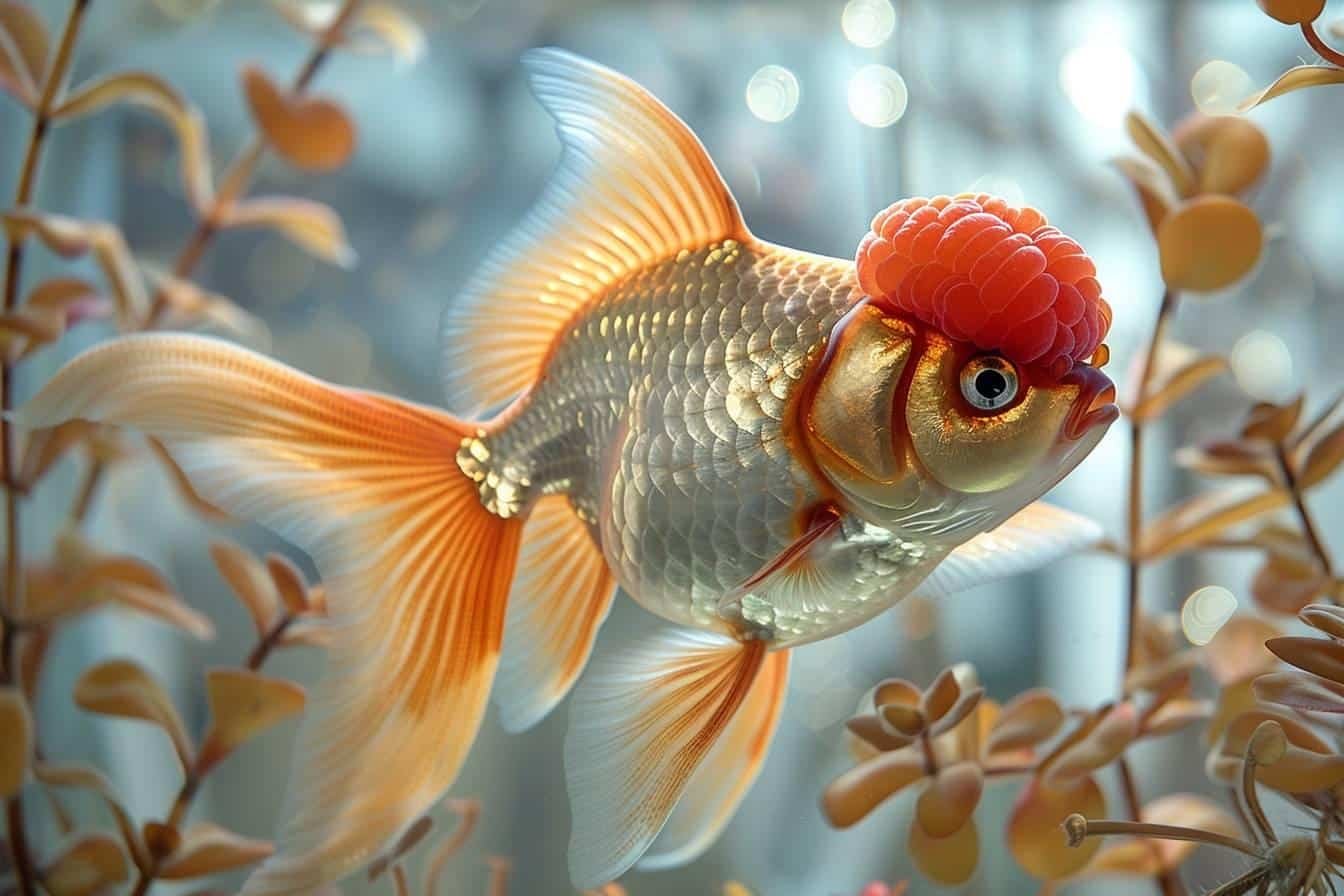Hello aquarium enthusiasts! Today I'm going to tell you about an interesting fish that I've been lucky enough to see up close in my department: the oranda fish. This little aquatic wonder is a real gem for lovers of exotic goldfish. Let me tell you all about this unique-looking little swimmer!
Origins and characteristics of oranda fish
Le oranda fish originated in China, but it was in Japan that it really caused a sensation. Imported in the 16th century, it was christened "Oranda Shishigashira", which means "Dutch lion's head" in Japanese. Quite an original name, don't you think?
The first thing that strikes you about the oranda is its distinctive appearance. Think of a classic goldfish, but with a fleshy growth on its head called a "cap". It's a bit like wearing a swimming cap all the time! This unique feature develops fully in 1 to 2 years, giving the oranda its very special look.
In terms of size, these little fellows can grow to between 20 and 30 cm when they reach adulthood. I've even heard of a record-breaking 37 cm specimen! So much for their need for space. Their fins are long and delicate, with a broad, veiled tail that gives them a truly graceful appearance in the water.
A rainbow of colours
One of the things I love about orandas is the variety of their colours. There are specimens :
- Red
- Oranges
- White
- Black
- Blue
- Calico (multicoloured)
- Bicolour or tricolour
Some varieties are particularly popular, such as the Red Cap (white body with red head) or the Azumanishiki with its mosaic pattern. My personal favourite is the Panda, with its attractive black and white contrast. It's a real feast for the eyes!
Behaviour and personality
Contrary to what their extravagant looks might suggest, orandas are rather calm and docile fish. They adapt very well to life in a communal aquarium, which makes them ideal companions for other peaceful species. I've always been impressed by their gentleness, even when I have to intervene in their habitat for maintenance.
Maintenance and care of the oranda
As a department manager, I often advise customers on how to look after these little aquatic gems. It's important to remember that orandas are a little more demanding than their classic goldfish cousins. But don't worry, with a few tips you can give your oranda the perfect environment!
Ideal habitat
To start with, let's talk about their accommodation. An oranda needs space, believe me! I recommend an aquarium of at least 50 to 100 litres per fish. If you opt for an outdoor tank, make sure it's at least 80 cm deep. These fish are sensitive to cold, so a temperature of between 17 and 28°C is ideal.
I have a little anecdote on this subject: one day, a customer came to see me in a panic because his oranda looked sick. As we talked, I discovered that he had put it in a small jar near a window. The poor fish was experiencing major temperature variations! After moving it to a suitable aquarium, it quickly regained its shape.
Power supply and maintenance
Orandas are omnivores, but they have a particular need for plant-based foods. I always advise varying their diet with quality pellets, blanched vegetables and worm treats. It's a bit like us with our fruit and vegetables - it does them a world of good!
In terms of maintenance, these fish are fairly sensitive to water quality. Good filtration and adequate oxygenation are essential. I recommend regular water changes, around 25% per week. It's a bit of work, but it's worth it to see these beauties swimming around happily!
| Parameter | Ideal value |
|---|---|
| Temperature | 17-28°C |
| pH | 6.5-7.5 |
| Hardness | 5-19 dGH |
Cohabitation and special features
If you're thinking of creating a community aquarium, orandas get on wonderfully with other calm fish. Fantails or ranchu make excellent companions. Avoid species that are too lively, which could stress them.
A word of warning: the famous cap can sometimes interfere with the fish's vision if it develops too much. It's rare, but it does happen. In this case, a gentle snip with scissors under veterinary supervision may be necessary. It's a bit like a fish haircut, if you like!
Speaking of special features, did you know that orandas are bred from mutations of the Ryukin? It's fascinating to see how selective breeding has been able to create such a variety of Japanese ornamental fish. And if you're interested in other Japanese species, I recommend that you take a look at the koi carp. They're just as exciting!

Oranda, a companion for life
With the right care, an oranda can live for 10 to 15 years, or even longer! It's a real long-term commitment. I've had customers who've seen their children grow up at the same time as their Oranda - that's something!
These fish really do have a unique personality. They can even learn to recognise their owner and 'wave' when you approach the aquarium. It's always amusing to see people's surprise when I tell them this!
Ultimately, the oranda is much more than just an aquarium fish. It's an exotic little companion that brings colour and life to your home. Admittedly, it requires a little more attention than a traditional goldfish, but believe me, it's worth it!
If you're ready to take the plunge, don't hesitate to come and see me in shop. I'll be delighted to help you choose your future aquatic friend. And who knows, maybe you'll come across one that's just right for you. rare variety that will become the star of your aquarium!
External sources :
wiki aquaculture
wiki fish farming

2 thoughts on “Poisson oranda : caractéristiques et soins du poisson rouge exotique”